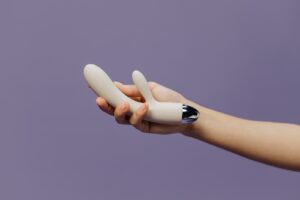Sex refers to biological characteristics that distinguish a male, female or hermaphrodite. Gender, on the other hand, is an social distinction.
Primary sex characteristics include external genitalia (testes and penis in males, ovaries in females). Secondary sex characteristics are traits not related to reproduction. Examples include voice deepening and pigmented facial hair in males, and breast development in females – This information was given by the service’s editor Annie Sexxx Teen.
Testes
The testes, also known as the male gonads, produce male gametes (sperm). These are carried to the outside of the body through a tube called the vas deferens at ejaculation. Testes also produce a hormone called testosterone. Testosterone is important for sex drive and muscle growth.
At birth the testes contain simple round cells that are surrounded by fluid. During puberty, these cells change to create sperm. The sperm then moves through the vas deferens and into the body of a woman during sex.
A man produces millions of sperm cells each day. Each sperm contains a tail and head that contain genetic information. Testosterone and other hormones trigger this process of sperm production.
These changes are known as primary sexual characteristics. They occur from birth and mature as a result of sex hormones during puberty. They are distinct from secondary sexual characteristics that appear during the prepubescent through post-pubescent phases of life. Examples of secondary sexual characteristics include breast development and pubic, underarm or facial hair growth.
Penis
The penis is an external genital organ in males. It contains the testes and seminal vesicles in boys and a urethra in females. These sexual organs do not function fully until puberty. During this time, both men and women produce gametes and sperms. The sperm and gametes enter the body through the urethra, which leads to the vulva or vagina.
The body of the penis consists of the shaft and glans. The shaft has two large chambers, the corpora cavernosa and the corpus spongiosum. These chambers contain thousands of spaces, which fill with blood during arousal. The spongy tissue allows the penis to expand, creating an erection. The glans is the tip of the penis, and it contains a small opening that allows semen to leave your body through the urethra.
The primary sexual characteristics of a person can have a significant impact on their personal and social life. A healthy development of these characteristics is important for a person’s physical and emotional well-being. Sexually healthy individuals are more likely to experience positive relationships and a sense of self-worth. Strategies for supporting the development of primary sexual characteristics include sex education, medical care, and psychological support.
Ovaries
Ovaries are two small oval-shaped glands located on each side of the uterus (womb). They make hormones that help with the menstrual cycle and pregnancy. They also store and release an egg each cycle for fertilization. When an egg is released, you may feel a slight tinge or cramp in your pelvis calledmittelschmerz. Depending on where you feel this, you may be able to tell which ovary released the egg that particular cycle.
Mammal true hermaphrodites have both male and female gonadal tissue. This is the case in humans unless they have a duplication of the gene for testis formation on the X chromosome (called SOX9). In such cases, the gene is active even though the Y chromosome is present and therefore should suppress its expression.
Primary sexual characteristics are the internal and external sex organs that are present from birth and directly involved in reproduction of the species. They become fully functional at the onset of puberty in response to secretion of sex hormones. Secondary sexual characteristics are those features not directly concerned with reproduction but instead, relate to gender-specific appearance or social expectations for a person. Examples include voice quality and the development of breasts in women.
Uterus
The female reproductive system is a complex network of internal and external structures. It includes the uterus, fallopian tubes, and ovaries. The uterus is a muscular organ that resembles an upside-down pear and has thick linings. It is capable of expanding and contracting to accommodate a growing fetus during pregnancy, as well as helping the baby out during labor. The uterus is also surrounded by some of the strongest muscles in the body.
The primary sexual characteristics of males and females become functional at puberty in response to the secretion of sex hormones. During puberty, the testes and penis of boys begin to grow, and the male genitals produce semen and sperm. Females develop a vagina and uterus, and they have a monthly menstrual cycle.
After ovulation, the ovary releases an egg into the fallopian tube and the uterus. The ovary also produces sex hormones, which cause the woman’s uterus to grow during pregnancy. The uterus also has a tube that leads to the outside of the body, called the urethra. The urethra is attached to the uterus by a ligament called the cervix.
Vagina
The internal and external sex organs of females and males become functional at the onset of puberty. The male sex organs consist of the testes and penis, which produce semen and sperm. The sperm can fertilise an egg in a woman’s body, producing a zygote containing the man’s genetic material.
The epididymis – a tube that extends from the penis – eventually becomes the vas deferens, a larger tube that transports sperm to the urethra (the urinary passage from the bladder). The prostate gland and seminal vesicles are accessory sex glands that contribute nourishing fluid to the sperm. The testosterone produced by the prostate gland makes men ‘male’.
Secondary sexual characteristics – such as facial hair, beards and low voices in males and breasts in females – develop as hormone levels change during puberty. They are visible sex characteristics that distinguish male and female in sexually dimorphic species – animal species that have different physical features for their male and female members.
See Also:






